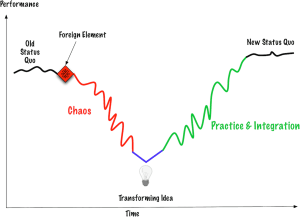Agile Maturity vs Ability to Change
Several of my clients want to use some sort of maturity assessment for their agile transformations. Often, the maturity levels demand adherence to specific practices or processes. Some of those practices and processes work for my clients now. (I’m not so sure about others.)

As my clients evolve, will what they do now continue to work in the future? How can specific practices be a sign of maturity?
For example, if a team mobs, they don’t need standups. If you don’t do standups because you don’t need them, what happens with the assessment? What about the real value—the business outcome?
I understand that many people want to see where they are now. However, seeing a point-in-time maturity value doesn’t create more business value. That’s why I prefer to see how good we are with change rather than practices.
On the other hand, we might gain value from certain kinds of assessments.
An Assessment Might Offer This Value
Why do an assessment of some sort? For agile transformation, an assessment can help people see how they change—how they innovate the products and the culture. (Yes, I also offer assessments. Just to be clear :-).)
I often start with qualitative questions and then move to quantitative data. Here’s what I look for:
- Notice when things work.
- Notice when things don’t work.
- Gather data that would allow us to then propose hypotheses to create experiments.
These are about the product development behaviors I see in the organization. How often can the teams change and do those changes help create better products for better business results? Do the teams learn from their changes?
Part of what might not work is the culture. (Is agility even possible?) Do I see people who feel the need to:
- Protect themselves with CYA behavior.
- Blame others to avoid the perception of failure.
- Placate others to get along.
The more I see these behaviors, the more I worry about creating an agile culture. These behaviors prevent us from experimentation. The less we can experiment, the less we can adapt or become resilient. All because we want to prevent failure.
Instead of maturity—especially for agile practices—consider changeability. How quickly do we recognize we need to adapt? Can we behave in ways that enhance everyone’s ability to adapt and create change? Do we encourage or “manage” change?
I would like to think I am more mature than I was in the past. (You might not agree!) I know I’ve changed my practices, both technical and behavioral. I’m much more capable of change now than I was even five years ago.
I’d like that for my clients, too.
Published on Java Code Geeks with permission by Johanna Rothman , partner at our JCG program. See the original article here: Agile Maturity vs Ability to Change Opinions expressed by Java Code Geeks contributors are their own. |


